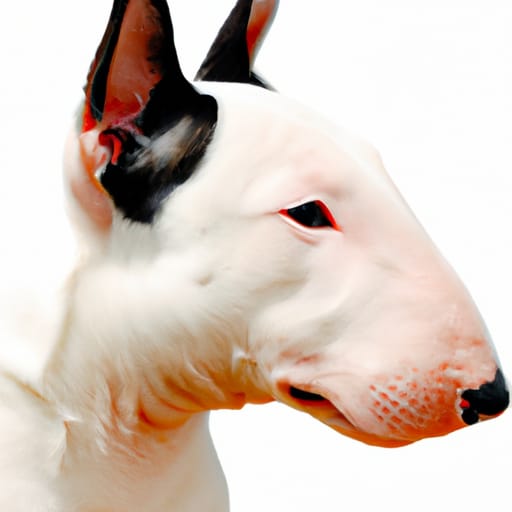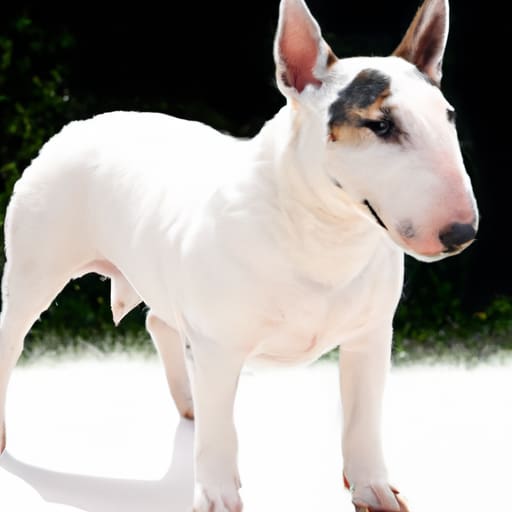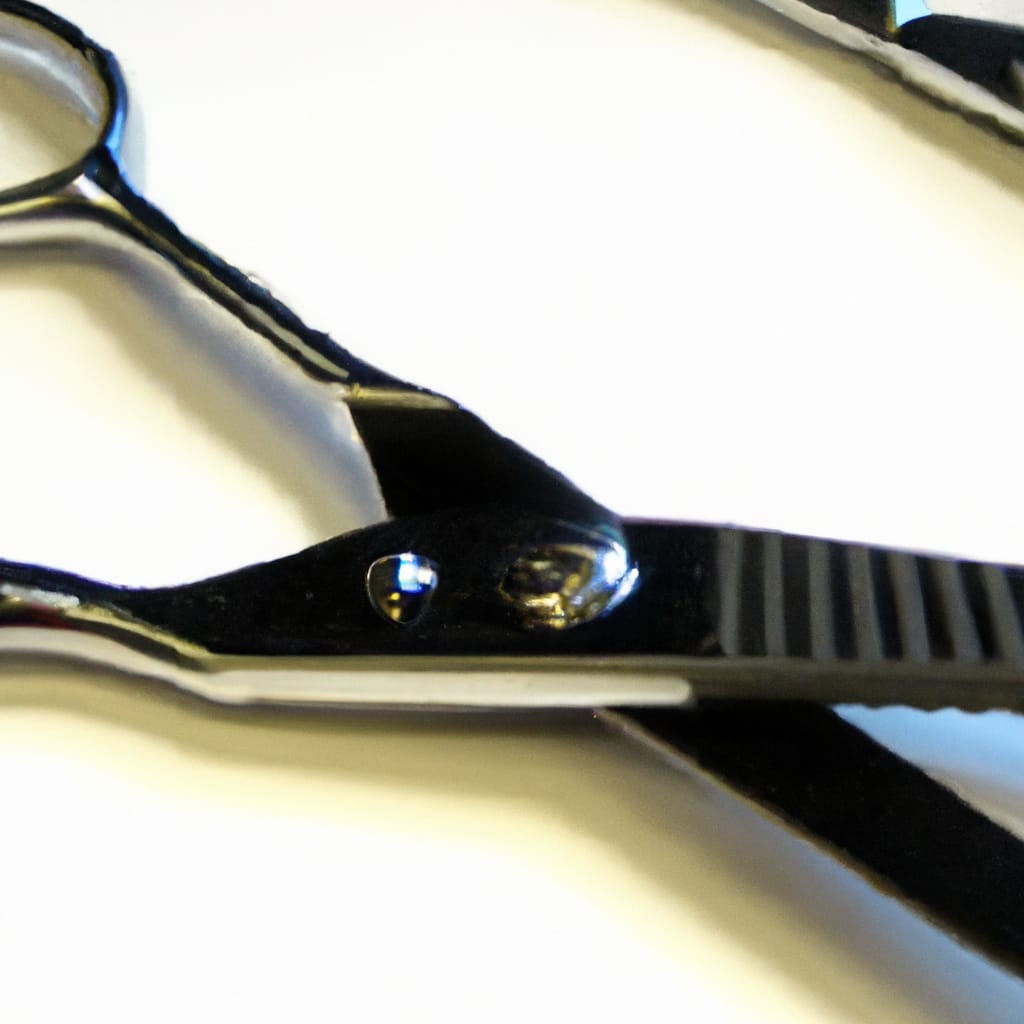Bull Terrier Shedding: Why Do Bull Terriers Shed?
Do Bull Terriers Shed? If you’ve ever wondered why Bull Terriers shed, this article has got you covered. We’ll explore the reasons behind their shedding and provide you with helpful tips and tricks to manage it. Whether you’re a current Bull Terrier owner or considering bringing one into your home, understanding their shedding habits is essential for a harmonious living environment. So, let’s jump right in and uncover the reasons behind Bull Terrier shedding!
Bull Terrier Shedding
If you are a proud owner of a Bull Terrier, you may have noticed that your furry friend has a tendency to shed. Shedding is a natural process that all dogs go through, but understanding why Bull Terriers shed and how to manage their shedding can help you keep your home clean and your pet comfortable. In this article, we will explore the shedding process, the frequency of shedding, factors that influence shedding, and tips for managing and minimizing the impact of Bull Terrier shedding.
Understanding the Shedding Process
To understand why Bull Terriers shed, it is important to grasp the hair growth and loss cycle. Like humans, dogs have hair follicles that undergo a cycle of growth, rest, and shedding. The shedding process allows for the renewal of the coat, making way for new and healthy hair to grow. The anatomy of a Bull Terrier’s coat is another key factor in shedding. These dogs have a short, dense, and smooth coat that requires regular maintenance to prevent excess shedding.
Hormones also play a vital role in shedding. Hormonal imbalances can contribute to excessive shedding, so it is essential to keep your Bull Terrier’s hormones in balance through proper nutrition, exercise, and regular veterinary check-ups.

Frequency of Shedding
The shedding frequency of a Bull Terrier can vary depending on various factors. Seasonal shedding patterns are common among dogs, including Bull Terriers. Typically, Bull Terriers shed the most during spring and fall, as they prepare their coat for the changing weather. However, some Bull Terriers may shed year-round due to genetics, underlying health issues, or environmental factors.
It is important to remember that shedding may vary between individual Bull Terriers. Some Bull Terriers may shed more than others, even within the same litter. This variation can be influenced by genetics, age, and overall health.
Factors Influencing Shedding
Several factors can influence the shedding patterns of Bull Terriers. Firstly, genetics and breed characteristics play a significant role. Some Bull Terriers have inherited shedding tendencies that are more prominent than others. Additionally, different coat types in Bull Terriers can impact shedding.
Nutrition and diet also play a crucial role in a Bull Terrier’s coat health and shedding. A well-balanced diet rich in essential nutrients, including omega-3 fatty acids, can promote healthy skin and coat, reducing shedding in the process. On the other hand, food allergies or nutrient deficiencies can contribute to excessive shedding.
The overall health and stress levels of your Bull Terrier can also influence shedding. A healthy dog with a well-functioning immune system is less likely to experience excessive shedding. However, stress, anxiety, and underlying health conditions can disrupt the hair growth cycle and lead to increased shedding.
Lastly, environmental factors such as climate, temperature, indoor living conditions, and grooming habits can impact shedding. Extreme weather conditions, dry or humid environments, poor ventilation, and infrequent grooming can all contribute to excessive shedding.

Genetics and Breed Characteristics
When it comes to shedding, Bull Terriers can exhibit inherited tendencies. Some Bull Terriers may naturally shed more than others due to their genetic makeup. Therefore, it is essential to consider the shedding history of a particular dog’s lineage if you are concerned about shedding when choosing a Bull Terrier.
Additionally, Bull Terriers come in different coat types. There are Bull Terriers with a single coat, which sheds less compared to those with a double coat. Single-coated Bull Terriers have a smooth and sleek coat that requires less grooming and shedding management.
Nutrition and Diet
A well-balanced diet is crucial for maintaining a Bull Terrier’s coat health and managing shedding. Providing your pet with high-quality dog food that meets their nutritional needs is essential. Look for dog food that contains a good balance of proteins, fats, vitamins, and minerals to support your Bull Terrier’s overall health, including the health of their coat.
Omega-3 fatty acids play a significant role in coat health, as they help moisturize the skin and reduce inflammation. Including foods rich in omega-3 fatty acids, such as fish or fish oil supplements, can promote a healthy coat and minimize shedding.
Food allergies can also contribute to excessive shedding in Bull Terriers. If you suspect your dog has food allergies, consult with your veterinarian to determine the best diet and potential food allergens to avoid.

Overall Health and Stress Levels
The overall health of your Bull Terrier can influence the amount of shedding they experience. A healthy dog with a strong immune system is less likely to have excessive shedding. Regular veterinary check-ups, vaccinations, and proper parasite prevention can contribute to your Bull Terrier’s overall health and minimize shedding.
Stress levels can also impact shedding. Dogs, including Bull Terriers, are sensitive to their environment and can experience shedding as a response to stress or anxiety. Providing a calm and nurturing environment for your Bull Terrier can help reduce stress levels and minimize shedding.
Certain health conditions can also contribute to excessive shedding in Bull Terriers. Conditions such as allergies, skin infections, hormonal imbalances, and thyroid disorders may require medical attention to manage shedding effectively.
Environmental Factors
Environmental factors play a significant role in shedding patterns. Climate and temperature can influence shedding in Bull Terriers. Extreme weather conditions, such as hot summers or cold winters, can cause your Bull Terrier’s coat to adapt and shed accordingly.
Indoor living conditions can also contribute to shedding. Poor ventilation, dry or humid indoor environments, and exposure to allergens like dust or mold can impact your Bull Terrier’s coat health and shedding patterns.
Grooming habits also play a role in shedding. Regular grooming, including brushing and removing loose hair, can help minimize shedding in Bull Terriers. Additionally, using appropriate grooming tools and techniques can assist in managing the shedding process effectively.

Managing Bull Terrier Shedding
While shedding is a natural process for Bull Terriers, there are several ways you can manage and minimize shedding to keep your home clean and your pet comfortable.
Regular grooming practices are essential for managing Bull Terrier shedding. Brushing your Bull Terrier’s coat regularly with a suitable brush helps remove loose hair and minimizes shedding. Aim to brush your Bull Terrier at least once or twice a week, depending on their shedding tendencies and coat type.
Bathing your Bull Terrier using appropriate shampoos and conditioners can help maintain a healthy coat and reduce shedding. However, be mindful not to over-bathe your Bull Terrier, as excessive bathing can strip the natural oils from their skin and lead to dryness and increased shedding. Consult your veterinarian for guidance on the appropriate bathing frequency for your Bull Terrier.
Incorporating deshedding tools, such as deshedding brushes or grooming gloves, into your grooming routine can further help remove loose hair and minimize shedding. These tools are designed to catch and remove dead hair, reducing the amount of hair that ends up around your home.
If managing your Bull Terrier’s shedding becomes overwhelming or you are unsure how to best address their shedding needs, seeking professional grooming assistance can be beneficial. Professional groomers have the expertise and tools to manage shedding effectively and help keep your Bull Terrier’s coat healthy and well-maintained.
Minimizing the Impact of Shedding
In addition to regular grooming practices, there are other measures you can take to minimize the impact of shedding in your home.
Maintaining a consistent grooming routine is crucial for minimizing shedding. By sticking to a regular grooming schedule, you can stay on top of your Bull Terrier’s shedding and prevent excess hair from accumulating in your home.
Providing an appropriate diet and nutritional supplements can also help minimize shedding. Ensure that your Bull Terrier’s diet is well-balanced and meets their nutritional needs. Consider adding supplements, such as omega-3 fatty acids, under the guidance of your veterinarian to promote a healthy coat and reduce shedding.
Monitoring your Bull Terrier’s overall health is essential for managing shedding effectively. Address any health issues promptly to prevent excessive shedding. Regular veterinary check-ups and open communication with your veterinarian will help ensure your Bull Terrier’s health needs are met.
Creating a pet-friendly environment can contribute to minimizing shedding. Regularly cleaning your home, including vacuuming carpets, washing pet bedding, and removing loose hair from furniture, can help prevent hair accumulation and make your home more comfortable for both you and your Bull Terrier.
In conclusion, shedding is a natural process for Bull Terriers, but understanding the shedding process, frequency, and factors that influence shedding can help you manage and minimize its impact. By maintaining a consistent grooming routine, providing a balanced diet, monitoring overall health, and creating a pet-friendly environment, you can keep your Bull Terrier’s shedding under control and enjoy a clean and comfortable home. Remember, shedding is a small price to pay for the unconditional love and companionship that your Bull Terrier brings into your life.










